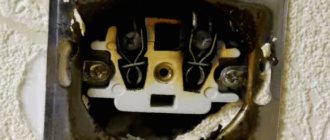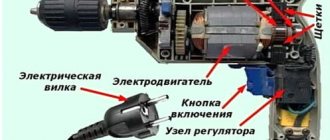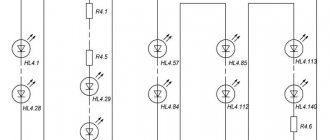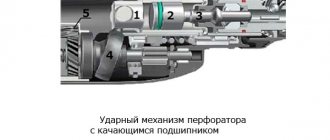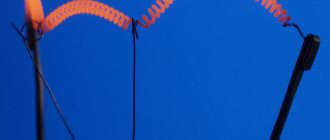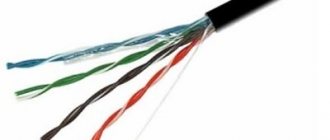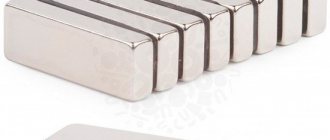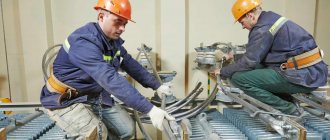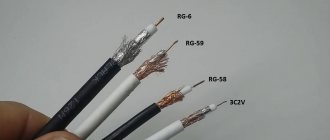Electric drill - remember the design of the tool
An electric drill is a type of tool that is designed for drilling different types of materials, including concrete and reinforced concrete. Only for this you will need to use a tool with an impact drilling function or an impact drill. You can find out how the tool works if you take it apart. A brief description of the design of Soviet and foreign-made electric drills is described below.
It should be noted that the design of modern drills of domestic and foreign production differs from the design of Soviet tools. Only these are minor differences, which consist in the absence of reverse on an electric drill, as well as impact drilling. So, structurally, an electric drill consists of two main parts - electrical and mechanical. The mechanical part is based on the following structural elements:
- Gearbox - a set of gears, due to which the speed decreases and the torque from the electric motor shaft increases
- The cartridge is an executive body that is designed to secure working attachments
- Bearings are supporting mechanisms for shafts and axles that ensure their rotation.
- Impact mechanism - in electric impact drills this device is part of the gearbox
The electrical component of any corded electric drill consists of the following elements:
- A commutator type motor consisting of a stator (fixed part), rotor or armature (moving part) and a collector (copper plates or lamellas through which current is supplied to the armature winding)
- Graphite or carbon brushes are a transmission device through which current is transmitted to the rotor winding. Brushes are consumables, and when they spark, this indicates their wear.
- Start button - depending on the model of the electric drill, the switches can be regular or with a built-in speed controller
- Reverse button - Soviet drills do not have such devices. This is a polarity reversal mechanism through which the direction of rotation of the tool chuck changes. Installed separately or integrated into the start button
- A ferrite ring is an element (filter) through which noise in the network is smoothed out
- A capacitor is a filter element that prevents interference from entering the network
- Power cord - the link between the electrical outlet and the tool
The photo above shows the design of the drill with the main components. Sooner or later, it becomes necessary to repair the drill due to the failure of its individual components and mechanisms. To do this, you first need to inspect the tool, identify the cause of the malfunction, and eliminate it. More details about what types of drill breakdowns there are, how to identify and fix them, are described in the material.
This is interesting!
Old Soviet drills do not have a reverse mechanism or an electronic speed controller. Instead of an electronic regulator, a mechanical one is used, consisting of gears of different diameters and numbers of teeth. This method of adjustment is more reliable, since reducing the speed does not affect the power. However, this method of speed control is expensive, as it requires the additional use of a pair of gears. If one pair of gears wears out, you can continue to use the tool. Below are photos showing the design of the mechanical speed controller of an old Soviet drill.
What you need to diagnose electric drill breakdowns
Where should you start troubleshooting an electric drill? Of course, from the first signs, by which it becomes clear where the breakdown is hidden and which part needs repair. It is easy to identify mechanical problems with a drill, but with the electrical part everything is much more complicated. Here you will need appropriate tools from which you can draw conclusions about the malfunction of certain components, parts and mechanisms of the tool. To identify breakdowns in the electrical part of the electric drill, you will need to prepare the following tools:
- Voltmeter or multimeter. Preference should be given to the second option, as it is more effective and multifunctional
- Device for measuring interturn short circuit in an armature
To diagnose the mechanical part, you will need to perform the following manipulations:
- See what specific function the drill does not perform
- Inspect the integrity of the gearbox by first disassembling the tool body
- Inspect the serviceability of the bearings, as these devices often fail in the absence of lubricant
- Determine if the mode switch is working properly. If the device jams or fails, the tool will only work in one mode
In a drill, like any other type of power tool, various parts and mechanisms fail. The entire drill cannot break down completely, but in any case, even when the mode switch is faulty, the operator will not be able to use the tool to its full potential. That is why you need to learn how to repair a drill yourself. This is not at all difficult to do, even if you have no experience. Therefore, you should not buy a new tool at the first malfunction, since the malfunction is sometimes easy to fix even without the need to replace parts. What types of breakdowns occur, how to fix them and what needs to be done for this are described in detail in the publication.
Visual inspection of the breakdown
Any instrument of the highest quality is susceptible to breakage. Especially if it is intensively exploited. For which the design of the broken angle grinder is intended, you can repair the tool yourself. However, of course, a preliminary inspection cannot be carried out without special skills.
Often the anchor burns out on angle grinders. Failure, possibly mechanical. Upon visual inspection, you will see uneven wear of the brushes, and of course, their burning. How to ring an armature with a multimeter
After sealing it must be
checked
or. Even today, if the anchor is faulty, the angle grinder will vibrate and not heat up.
There are electrical breakdowns. These include:
- damage to the armature winding
; - the presence of a short circuit in the turns;
- broken resistance between the core and the winding.
Such faults can be identified using special measuring instruments, nettles, and a multimeter.
Where to look for a breakdown in the electrical part, the most common faults and their elimination
Electrical faults are the most difficult not only to identify, but also to eliminate. This is due to the fact that it is impossible to see the principle of the flow of electric current, but you can understand how the drill works. Based on the operating principle of the electrical part, appropriate conclusions can be drawn about possible malfunctions. The operating principle of the electric part of the drill is as follows:
- When the plug is plugged into a socket, voltage is supplied to the electric motor.
- The presence of a button in the design eliminates automatic start when the plug is connected to an outlet
- For the tool to start working, you must press the start button
- At the same time, the contact closes and current is supplied to the stator and rotor windings. The wires are connected to the stator directly, and to the rotor through brushes and a commutator assembly
- If we describe the principle of operation of a commutator AC motor, it lies in the fact that the stator winding acts as a permanent electromagnet, due to which the armature is repelled. The armature will not rotate just like that, so it is also necessary to apply biased current to its winding
The rotor begins to rotate at a certain speed. This speed depends on the voltage. To reduce speed, regulators are used that work on the principle of increasing resistance. The greater the resistance, the lower the voltage, and accordingly the lower the rotation speed. Knowing the principle of operation of the electrical part of the drill, we will consider the main types of breakdowns and their elimination.
What equipment you may need
To be able to perform basic repairs on your own electric drill, you cannot do without the appropriate equipment. Usually, it all depends on the nature of the malfunction, but in most cases, to repair a Makita drill (or any other manufacturer) yourself, you will definitely need the following tools:
- Screwdriver – for disassembling the device body.
- Multimeter - you can use it to find a fault in an electrical circuit.
- Sandpaper – for cleaning oxidized contacts.
Based on what exactly caused the breakdown, you will need to purchase some components:
- Gears.
- Brushes.
- Bearings.
- Trigger (button).
If the previous disassembly of the drill was carried out a long time ago, then the lubricant in the gearbox should be replaced as a preventive measure. This will not only significantly reduce the load on the electric motor, but also increase the service life of manual equipment. Bearings also need lubrication. For this reason, after eliminating the main causes of the malfunction, these parts should be diagnosed.
The drill does not turn on, what should I do?
When connected to the network, there are no signs of life of the instrument. Experienced craftsmen have had to deal with this phenomenon more than once, but what to do if such a phenomenon happens for the first time? Disassemble, diagnose and repair the drill. Troubleshooting when the drill does not turn on begins with identifying the presence of voltage in the network. It’s trivial, but true - often the reason for a tool’s inoperability is the lack of voltage in the network. The reasons for this may be scheduled repairs at the transformer substation, tripping of circuit breakers, or damage to the power cord of the outlet. Take a multimeter and measure the voltage in the network.
If the socket is working, then the next suspect for a malfunction is the network cable. Yes, it also does not last forever, and can be damaged during the use of the tool. Do not try to find a breakdown visually, as this will be a waste of time. Take the tester and turn on the dialing mode, check the integrity of both wires. To do this, you need to disassemble the case and alternately touch one probe to the contact on the plug, and the second to the wire connected to the button. The cores are in good working order when the device “beeps”.
Checking the armature with a multimeter
In order to carry out such a check, you should also gain access to the anchor. The multimeter must be set to the range of two hundred ohms, and the probes of the device touch two adjacent slats.
We take measurements on all turns of the winding; if all readings are the same, then the armature is working. Electric drill
is one of the most necessary
checks
as a rule.
If the resistance values differ on any turn, then there is a malfunction. You should also check the housing.
How to perform a simple repair of a drill button with a speed controller
If a preliminary check shows that the power cord is in good condition, then it is necessary to continue searching for the fault along the current flow circuit. The next element in the queue for troubleshooting is the button. On Soviet drills, such buttons are a simple mechanism through which contacts are closed. On modern tools, the trigger design includes a round regulator in the form of a washer with resistors, with the help of which the speed of rotation of the cartridge is regulated.
If the drill button does not have a regulator, then identifying and eliminating malfunctions is quite simple. To do this, you should disassemble it, inspect the integrity of the contacts and clean it with fine-grained paper sandpaper.
If an additional reverse switch is connected to the button, it must also be checked by testing. If it is determined that the breakdown is related to a malfunction of the button, then it is easier to replace it than to look for the malfunction and try to fix it.
Button repair
For some models of electric drills, this part is equipped with an electric motor speed regulator, and also has a regulator for the direction of rotor rotation (reverse). This is a fairly complex design, so repairing the button should be carried out with a high degree of care. Often, after disassembly, further use is not possible.
Inside the button of such a complex device there are many small parts that can fall out when the case is opened. They are easily lost and difficult to put back in their original place. Therefore, this part of the work should be performed with increased attention.
After careful disassembly, you should clean the terminals from carbon deposits (perhaps that is why the current did not pass) and reassemble everything in the reverse order. Next you need to check the button for functionality.
Drill button why a capacitor is needed and how to check its serviceability
If you disassemble the button, you will find that in addition to this part a capacitor is connected (a yellow or black block). Could this unit cause the power tool to malfunction or not work? No, the capacitor is used to smooth out noise that occurs in the network. It serves as a filter element. If you disconnect it, the drill and other types of power tools will work as before. However, it is not recommended to operate the tool without a capacitor, since its absence (or malfunction) leads to the failure of semiconductor elements.
This is interesting!
There are two ways to check the health of the drill capacitor - with a multimeter and visually.
If the capacitor on the drill button is inflated, it should be replaced with a similar capacitance. There is an opinion that the capacitor is designed to create a phase-shifting effect. This is an erroneous opinion, since this element does not affect the operation of the tool in any way, but only prevents radio interference from getting back into the network.
Typical tool failures
Knowing the design of an electric drill, it is easy to determine the reason why one or another of its functions does not work. It should be noted that you can avoid breakdowns of power tools if you periodically carry out preventive maintenance related to replacing the lubricant of mechanical parts.
After completing drilling work, it is necessary to remove dust from the tool, especially from its ventilation holes. The nature of faults is divided into electrical or mechanical origin.
Electrical damage
This type of breakdown occurs due to exceeding the permissible load on the device and violations in its operation. They manifest themselves in the refusal of the tool to turn on, in a malfunction of the reverse or speed controller. Most often, to restore functionality, you will need to disassemble the start button and clean all places associated with the electrical contact.
The appearance of a burning smell indicates an overload in the operation of the electric motor. In this case, the condition of the brushes and windings is first checked, and the connection points of the power wire are examined to ensure there are no burns. Burning is associated with the ingress of dust, as a result of which the contact resistance increases, which leads to heating. Electrical faults are easily calculated using a multimeter and visual inspection.
Mechanical breakdowns
Mechanical faults are more difficult to detect. This kind of breakdown is usually accompanied by the appearance of extraneous sounds, and it will not be possible to eliminate them without disassembling the instrument. If the drill is poorly fixed in the chuck, it will need to be replaced, since the wear of the gear connection cannot be restored independently.
The appearance of a wedge during operation is associated with damage to the gearbox or bearing. If you disassemble the device, the damaged unit will be immediately visible. Wear on gears or splines will indicate the need to replace them. Bearings are checked by rocking them on the shaft. If the movement is not smooth or extraneous sounds are heard, then the bearing is replaced. After you manage to find the faulty unit and repair it, before putting the device back together, you need to clean the gearbox of old lubricant and apply new one. Then the device will be able to serve for more than one year.
Originally posted 2018-07-04 08:18:20.
How to connect the drill button
Experience shows that drill malfunction in 60% of cases is associated with a malfunction of the shutdown button. Often, an attempt to replace this element leads to all the wires getting tangled, and the question arises - what should be connected where in order to connect everything correctly. This is exactly what is worth understanding so that wires connected at random do not lead to a short circuit.
It should be noted right away that the buttons on drills can have different designs, but there are three types of their devices:
- Conventional ones without a regulator - when you press the trigger, the electric motor starts at full power. Typically, such buttons were used on old Soviet drills
- Button with speed control - there is a washer on the trigger, the movement of which increases or decreases resistance. The greater the resistance, the lower the rotation speed of the cartridge
- Buttons with speed control and reverse - the device is additionally equipped with a plate with a lever for switching the direction of rotation of the cartridge. Reversal is realized by changing the polarity of the voltage supply to the rotor and stator windings
One of the most difficult connection schemes is the last option. However, if you look at it, there is nothing difficult about connecting all types of buttons. The following diagrams for connecting the buttons of different drills - Bosch, Interskol and others - will help you figure this out.
This scheme is also found in another design, as shown in the photo below.
The difference between these circuits is in the connection of wires from the reverse to the rotor and stator. Both options are correct and will work. It all depends on the model of the tool. By following the sequence of connecting the drill buttons, it will not be difficult to restore the functionality of the tool. Below is a diagram in the form of an illustration of connecting a drill button to an AC brushed motor.
It is worth noting that the drill button fails not only due to burnt-out contacts, but also due to wear of the expansion spring. With a large output, the spring breaks, which ultimately leads to jamming of the device.
Replacing a button
As for the starting mechanisms, which do not have a speed controller and the direction of rotation of the engine, not everything is so simple here. Although their design is somewhat lightweight, it is still quite complex. However, there is often no point in repairing the drill button yourself, since it is much more practical to install a new one.
To do this, you should visit the nearest store that sells spare parts for electric tools.
Here you need to take into account an important nuance. There is a great variety of drill models, so not all buttons are absolutely identical. When going shopping, you need to copy the data of the old part onto a sheet of paper. But even with such actions, misunderstandings may arise, since there is a possibility that the purchased button with the same parameters will not be installed in the body of the power tool, since there are differences in the design of this mechanism, which makes it impossible to secure it.
For this reason, the best option is to take the old button with you and use it to select a new part with exactly the same parameters, including dimensions.
How to identify a faulty brush assembly
Drill brushes, which are a consumable item, fail. The brushes are made of graphite, and with their help, current is transferred to the rotor through the commutator unit. During operation, brushes wear out, burn out, wear out and require replacement. The service life of brushes depends on various factors:
- Quality
- Collector serviceability
- Power tool load
A brush malfunction can be identified by signs such as excessive sparking. If, before the drill stopped starting, there was excessive sparking with signs of carbon deposits, then it is highly likely that the carbon brushes need to be replaced. To replace, you need to remove the elements from the brush holders, remove the worn parts and install new ones in their place.
This is interesting!
If the brushes are worn more than 60% of the original length, they must be replaced.
In addition to the malfunction of the brushes, it is necessary to pay attention to the condition of the copper lamellas of the commutator. If there are signs of soot on the copper base, as well as chips and other defects, then all this should be eliminated. If you cannot fix it yourself, then you should replace the anchor. The cause of carbon deposits on copper plates is excessive sparking of the power tool. In addition, if the commutator is heavily worn, a connection (short circuit) between the plates occurs, which is also unacceptable.
Do-it-yourself repair of a drill gearbox
If there is a need to disassemble a tool (breakage, simply replacing a part, or another reason), then it makes sense to pay attention to the gearbox and evaluate its technical condition. Perhaps some parts of the transmission mechanism have worn out.
In most drills, the gearbox is designed quite simply - two flat gears, which are made of metal or hard plastic. To diagnose, it is worth blocking the motor spindle and trying to turn the gears. In this case, it is important to evaluate the degree of backlash, and also check whether there is slippage at different transmission points.
When it comes to a professional tool, the gearbox can be equipped with a gear selector or contain an adjustable safety clutch. Only these parts cannot be repaired. Therefore, we have to install new ones.
To replace the gear, you cannot do without the help of a circlip remover. When removing a part, it is important not to lose the key, since it is very difficult to find a replacement. When carrying out DIY repairs on an impact drill, when the gearbox has already been disassembled, you should remove the armature completely, which will allow you to evaluate the smoothness of operation and check for play in the bearings.
Armed with an awl, you can remove the protective covers of the separator to ensure its safety. For the mandrel, it is best to choose a copper tube or a wooden block with a longitudinal hole.
After performing manipulations with the gearbox, you need to remove any remaining grease and fill the chamber with new molybdenum paste (up to 2/3 of the volume). Before reassembling in reverse order, you should make sure that there are no foreign objects.
If the electric motor is faulty, when should it be replaced?
The commutator-type electric motor on a drill and any other tool is the heart of the equipment, which costs 60% of the total cost of the device. If the malfunction is related to the electric motor, then there are two ways to repair the drill malfunction - replace the entire motor or carry out diagnostics, identify the malfunction and eliminate it. It should be noted right away that you can do the diagnostics yourself, but you won’t be able to fix the faults yourself. Here you will need to take the faulty unit to a specialized workshop, but practice shows that it is easier to buy a new rotor or stator than to repair them.
This is interesting!
It is also rational to take the engine in for repair when it is impossible to find spare parts for it.
Let's consider the principle of checking the serviceability of the stator and rotor of an electric drill motor with your own hands:
- Using a multimeter in resistance measurement mode, the value between the armature windings and the metal core is measured. The presence of resistance indicates a violation of the integrity of the insulation
- We use a marker to indicate the plate from which the check begins. Use the probes of the tool to touch the plates one by one and record the resistance value. In this case, the value between the plates should be approximately the same. A resistance difference of more than 10% is unacceptable and indicates the presence of a break
- Checking interturn short circuit. A special device can be used to measure the presence of an interturn short circuit. It makes no sense to buy such a device specifically, since if there is no breakdown of the insulation on the body or a short circuit between the plates, then with a high degree of probability it can be assumed that the armature is working
- After this, you should check the serviceability of the rotor. Similarly, the absence of resistance between the winding and the core is checked
- Check the resistance between the windings. The absence of resistance indicates complete damage to the winding, and if its value is large, a breakdown can be assumed. The video description below describes in detail how a step-by-step check of the serviceability of the commutator motor is carried out.
Malfunctions of the stator are less common than the rotor, but in any case, if the drill has recently been operating under high load, then the motor will fail. If it is determined that the motor on a drill is faulty, then it is easier to replace it than to repair it, and sometimes it is better to buy a new drill. The video below describes in detail how to find and fix electrical problems with a drill.
Design and malfunctions of an electric drill
Drills can come in different sizes and colors, but the pattern inside is always the same.
Impact drill device
The main components of an impact drill:
- Cartridge.
- Metal gearbox housing.
- Electric motor.
- Start button.
- Button to switch between normal and shock modes.
- Frame.
- Induction rings.
- Capacitor.
- Network cable.
- Brushes.
- Reverse button.
- Speed regulator.
A simple drill without an impact mechanism does not have a metal gear housing. The shaft and gear bearings are inserted into the drill body.
Hammerless drill gearbox
Basic drill malfunctions:
- Doesn't turn on. Causes: damage to the power cord, wires inside the drill, start button, or start capacitor.
- Engine malfunctions.
- Broken or worn brushes.
- Sparks, smokes, crackles, unpleasant smell. The reason is the brushes or the motor.
- Loss of power occurs due to a faulty armature.
- Damage to the power, reverse, and speed control buttons.
- Bearing wear.
- Poor chuck clamp.
Engine faults:
- Shaft deformation.
- Making an anchor.
- Failure to secure the poles to the frame in the stator.
- Winding wire rupture due to overload or abrasive dust.
- Short circuit to body or between turns.
All of these faults, with the exception of engine faults, are easy to fix yourself. Engine repair is possible if you have certain skills and knowledge. Sometimes it's easier to take it to a workshop or buy and install a new one. Installing any new unit is cheaper than repairing it in a workshop, since professionals charge a fee equal to the cost of the unit for one replacement.
Video: drill device
Recommendations for extending the performance of new and repaired drills:
- The drill should not operate for more than 20–25 minutes continuously after being plugged in.
- Do not overheat the device to the point of burning your hands.
- It is necessary to clean the cartridge from dirt and lubricate it.
- Do not use very dull drills.
Failure of the mechanical part of the instrument
If electrical faults are difficult to identify, then dealing with mechanical breakdowns is much easier and cheaper. Mechanical defects can be identified even without the need to disassemble the instrument. If the drill cracks or the chuck does not rotate, but the characteristic sound of the engine is heard, it means there is a breakdown in the gearbox. When the attachment does not hold in the drill, there is a malfunction in the clamping jaws. Bearings can also fail and cannot be repaired and require comprehensive replacement.
Let's consider each type of malfunction, and the features of their identification and subsequent elimination.
- The bearings have failed.
Typically, bearings last quite a long time, and the main reason for their rapid failure is the lack of lubrication or its depletion. There are two types of bearing failures: complete destruction of the balls or wear. If completely destroyed, the part must be replaced. There are no difficulties when replacing bearings, so be sure to check their serviceability - Jamming of the gear unit - here breakdowns are associated with licking of the driven or driving gear.
Even during operation, a tooth may break off, which will ultimately lead not only to a decrease in productivity, but also to a complete jamming of the transmission mechanism. If the gearbox malfunctions, the gears must be replaced. It should be taken into account that on household tools the gearbox can be made of plastic gears. They must be replaced with similar ones, otherwise installing metal gears will lead to accelerated engine wear. - Repairing the impact mechanism of a drill - unlike a hammer drill, this mechanism on a drill has a primitive design.
The design consists of two parts, reminiscent of a friction clutch. Impacts are created by the movement of a toothed gear. The notches on the rotating gear mesh with teeth of a similar design on the housing, and as if jumping, clicks are created - they are also impacts. Malfunctions of the impact mechanism of a drill include the following: licking of jagged edges, which ultimately leads to a decrease in productivity. More often, the notches are licked off on the moving gear, which needs to be replaced. Another breakdown can occur when the shock mode of the limiter is not turned off. The reason is the wear of the metal ball, which, when the switch is moved, goes into the end of the shaft, thereby limiting the possibility of the gear teeth coming into contact with the protrusions on the body. To eliminate the malfunction, you should replace the ball in the design of the impact mechanism - Malfunction of the actuator - cartridge.
Drills use key type chucks, which are characterized by increased reliability and efficiency. The clamping jaw on this part may fail and should be replaced. Detailed instructions on how to remove, repair and replace the chuck on a drill
Bearings and cartridges are considered minor mechanical failures, and failure requires an appropriate approach. Even if diagnostics have shown that the gearbox does not need repair or replacement of parts, it must be dismantled, washed in gasoline and new lubricant applied. Such manipulations must be performed regularly, depending on the frequency of use of the power tool. A detailed description of how to repair the impact mechanism of a drill is described in the video report.
Learning to extend the life of a power tool from the moment of purchase
In order for the purchased power tool to serve for a long time and not fail at the most inopportune moment, it is necessary to ensure proper care from the very first day of purchase. This care includes doing the following:
- Store the tool exclusively in a dry and warm room. Exposure to moisture and low temperatures will lead to the formation of condensation and failure of the electrical parts of the tool.
- Do not use the tool for a long time under heavy loads, as this will lead to overheating of the windings and failure of the electric motor.
- The presence of an impact mode does not mean that you can drill holes in concrete and reinforced concrete with a drill every day. The impact drilling function is auxiliary and is intended for infrequent use. For such purposes it is necessary to use a hammer drill
- If the brushes spark strongly, it is necessary to replace them without waiting until the tool stops turning on altogether.
When purchasing, keep in mind that drills are available for household and professional purposes. If you choose a cheap household option, then you need to understand that such a tool is intended only for infrequent home use. Any repairs in the house using a household drill will cause the tool to fail. If you need a drill to make repairs in your home, then you need to choose only professional options.
Repairing a drill yourself is not at all difficult. The main thing is to approach this issue accordingly - start troubleshooting from small to large. After proper repair of a power tool, it will last for a very long time.
Selection of spare parts
During maintenance or DIY repairs of a Bosch drill, you may notice wear on some parts. Of course, they need timely replacement. Many craftsmen warn that it is necessary to use only original components.
Also, don't look for any complicated workarounds. A typical example of a gross and unforgivable mistake - instead of a broken button of the standard version, a regular toggle switch is installed. This type of “repair” should be avoided because using such a drill can be dangerous.
The range of spare parts market for power tools is quite diverse, so you can always find the necessary spare part. If the drill was purchased in one of the stores of a large retail chain, then finding the part will not be a problem. All you need is to determine the manufacturer’s brand and the exact name of the instrument model. For example, Bosch. Do-it-yourself drill repair will be greatly facilitated if you know this information. Usually it is printed on the nameplate of any device.
This is due to the fact that various modifications of the same model may have both compatible components and completely unsuitable parts. You should not only focus on their appearance, but also clarify information regarding the main dimensions and dimensions of the parts.
With the components of the drive mechanism, everything is not so difficult, since the data can be found without difficulty:
- There are bearing markings on the protective rings of the cages.
- Gear nomenclature codes are stamped on them.
As practice shows, it is very easy to select spare parts for many models of the most popular tools. As an exception, there are drills that have been in use for more than thirty years.
